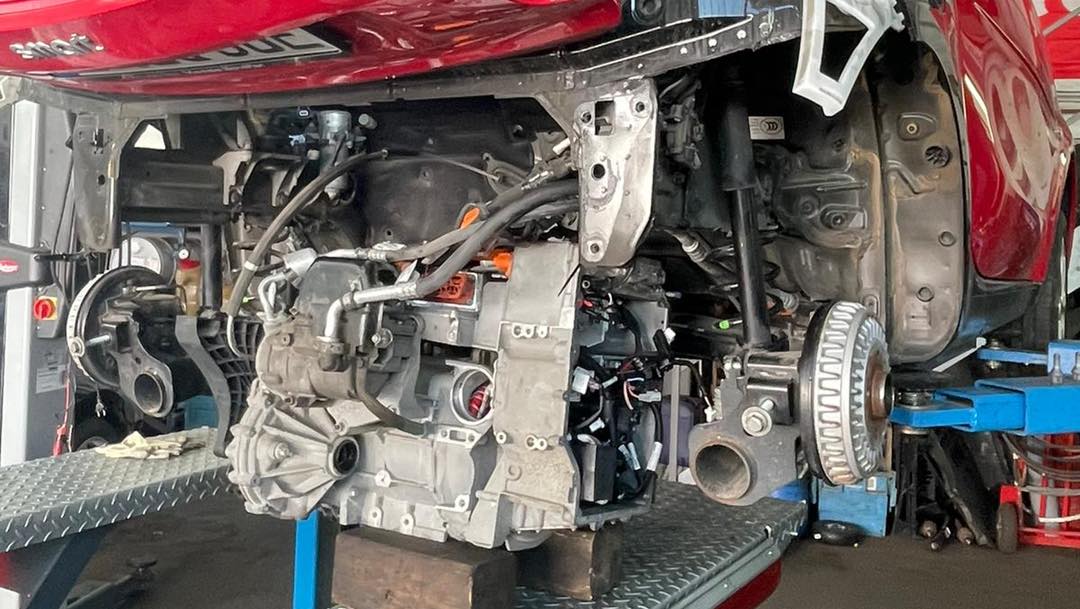


If you’ve never stood as a guarantor for a questionable loan, never had a less-than-pleasant experience in a high-security facility, never borrowed money from a less-than-official lender, or never owned a temperamental Citroën, VW, or BMW hybrid but want to experience all of that at once—this exceptional vehicle might be your perfect introduction.
German engineering, once renowned for its excellence, hasn’t just declined slightly—it seems to have reached an entirely new dimension. To perform a simple task like inflating the tires, one must first remove the entire engine, as the valve is ingeniously placed inside the motor’s stator. But before even attempting that, you’ll need to split the car in half—yes, literally!
Repair costs for this masterpiece don’t start at €1,000, nor €2,000, or even €3,000. Instead, every significant issue demands an eye-watering €5,500, because the solution is always the same—replace the entire powertrain module. If your windshield wipers stop working, you might as well contact an industrial machinery specialist to weld a whole new front end of the car—because, apparently, that’s the more practical approach.
But wait, there’s more! This vehicle boasts not just one, but four distinct faults that require full module replacements, two of which appear to be software-related. And the fun doesn’t stop there—battery defects? Of course! Not just a minor issue, but six different recurring serial faults. Out of those, three are seemingly software-triggered (contactor counter, impact detection, and cell imbalance OTP error), leading to the inevitable replacement of a perfectly functional battery—at a staggering cost of €15,000.
Truly, a marvel of modern automotive engineering!
The challenges associated with this vehicle remained unresolved until it arrived at EV Clinic. Over the course of 12 months, we conducted extensive research across three different fleets and multiple vehicles, identifying and addressing numerous technical issues. Through this process, we uncovered a range of design choices that significantly impact repairability and maintenance.
For instance, the high-voltage cable incorporates integrated cylindrical 40A fuses, meaning that if a fuse fails, the entire cable must be replaced instead of a simple fuse swap. Additionally, we observed a recurring issue with the internal instrument in the Battery Management System (BMS) responsible for measuring insulation resistance. In its current design, the standard repair approach requires replacing the entire battery pack rather than just the affected BMS component.
One notable aspect of this vehicle is that body parts are relatively affordable, which may provide some cost benefits in certain repair scenarios.
Let’s go through the serial defects:
DCDC hardware defect: €5500
DCDC programmed fault: €5500
Inverter: €5500
Charger: €5500
Motor bearing: €5500
Fuse in the type 2 cable port: €800
Battery after a crash – programmed fault: €15,000
Battery “unable to charge” internal bug never resolved by the manufacturer: €25 million
BMS ISO error: €15,000
BMS programmed fault P18051C: €15,000
Front headlight Daylight LED DCDC: €350
All these slippery problems arise by 30,000 km.
To highlight the positives, this car is an excellent choice for city driving. Its compact size makes parking and maneuvering effortless, making it a practical urban vehicle. However, when it comes to long-term ownership and maintenance, it is best suited for those with deep expertise—like us at EV Clinic—or for someone with close ties, such as a family member, trusted friend, or colleague. For the average owner, maintaining this vehicle can present significant challenges.
At EV Clinic, this model will serve as our future replacement vehicle for clients, but we do not recommend purchasing it unless the price is low enough to account for the potential high repair costs. If there’s one thing we firmly stand against, it’s unreliable vehicles—regardless of whether they are electric, hybrid, or combustion-powered. In contrast, the first-generation Smart 451 ED is a well-designed and durable electric vehicle, offering far better engineering solutions and fewer faults, making it our recommended choice.
EV Clinic’s Perspective on Repairability:
While electric mobility has great potential, certain design choices can make repairs unsustainable. Models such as the Smart 453 EQ, Renault Twingo, and Renault Zoe R240 appear to have been designed in a way that leads to recurring failures, often at intervals as low as 50,000 km—or, in some cases, as little as 10,000 km. While we cannot change the original design, our goal is to help customers avoid unnecessary spending on non-sustainable repair solutions.
A particularly concerning issue is the use of non-repairable onboard charging (OBC) systems. Instead of using commercially available and serviceable components, these models incorporate the FS200T12A1T4 Infineon HybridPACK1 IGBT—a component typically designed for driving electric motors but repurposed here for handling 22kW charging power. Unfortunately, this IGBT is not available for purchase separately, nor is the Battery Charger Box (BCB) module itself. As a result, when a fault occurs, the only option offered by the manufacturer is to replace the entire powertrain box, leading to excessive costs.
Additionally, testing repairs on these systems requires full disassembly and reassembly—an intricate process that can take up to eight labor hours just to verify whether the fix was successful. Our mission at EV Clinic is to introduce sustainable repair solutions where possible, even when the original design does not prioritize serviceability. While this is not always easy and can be time-consuming, we are committed to making electric vehicle repairs more practical and cost-effective.














